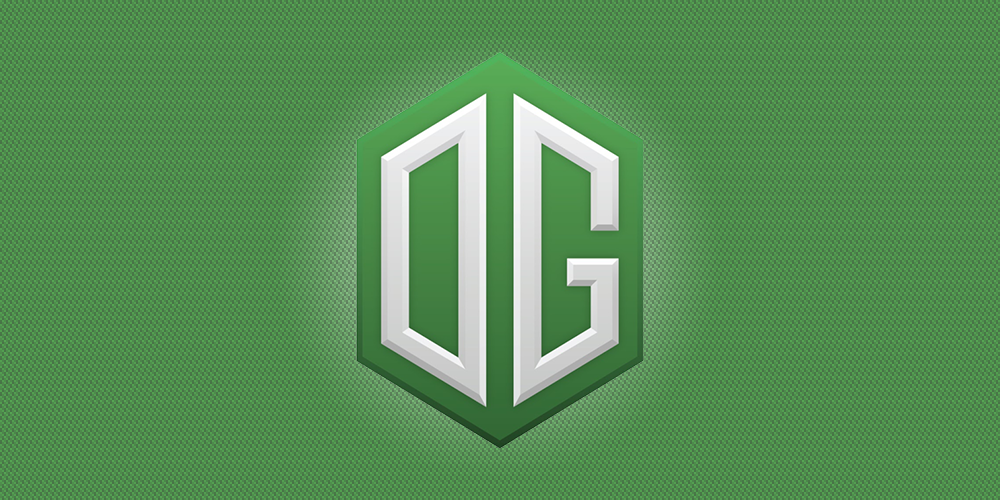Like many Dota fans, I had the chance to watch The Summit 4 this past week. The Summit, produced by studio Beyond the Summit, tends to be a bit of a gift to the community in the sense that it’s a casual environment for pros to compete with eachother while interacting with the audience through commentary. Whether they take that chance, though, depends on them.
I had the chance to go to The Summit 3 back in May of this year, and had a great experience. However, I noticed that there were definitely a couple different types of pros: some were content to hang around the house, while some decided to leave for the hotel immediately after winning or losing their sets.
Even though Evil Geniuses won The Summit 4, and Team Secret won The Summit 3, I believe that the true winners are the ones who take the time to put in the extra hours in a comfortable, inviting setting to increase their presence on camera.
If we go by that metric, I think the real winners of The Summit 4 were Team OG.
A bit of history: Team OG were formerly (monkey) Business, a Western team formed in August 2015 after The International 5. Johan “BigDaddy” Sundstein reunited with former Fnatic teammate Tal “Fly” Aizik, who competed with David “MoonMeander” Tan with compLexity Gaming at TI. Andreas “Cr1t-” Franck Nielsen was picked up after ping-ponging around multiple mid-level European teams, and Amer “Miracle-” al-Barqawi brought the hype and uncertainty that comes with being a ladder star, but having relatively low competitive experience.
Considering the calamity that comes with the post-TI atmosphere, I was ready to see (monkey) Business become another team that tried something new, then broke up when the going got tough. BigDaddy had had a middling time with Cloud9 at TI, and his shift back to the mid lane role that he excelled at in Heroes of Newerth was an uncertainty. Fly and Moon’s TI went better than most people expected, but coL crumbled in the lower bracket. Cr1t- and Miracle- were unknown factors, and could easily be duds.
As with most things in these cases, I was pretty happy to be wrong.
It turns out that in esports it’s standard for the best orgs to own the rights to the players they contract. There’s so little transparency, if any, between the players and the organization. Players are often never consulted on what brands they will be promoting. They’re never included in decision making. This is why we’re launching OG.
(monkey) Business turned into Team OG at the end of October. They announced that they would be “bankrolled” by Hitbox.tv, a Twitch.tv competitor that I primarily know as where games Twitch doesn’t like go to stream. Games like Hatred (violence porn), Huniepop (porn porn) or Project M (dubious legality) find homes and fans on Hitbox, and while the viewer numbers rarely compare to Twitch, the company seems principled and committed to getting better; hell, they even have 4K streaming now (RIP bandwidth).
Team OG joining Hitbox meant that they would be given a degree of autonomy, but would still be leashed to streaming on the platform. For many people reading this, you know that similar arrangements rarely work out for the teams involved unless they receive a large enough contract amount to offset the lower discovery rate and the “inconvenience” of an audience having to leave Twitch.
Ironically, BigDaddy was involved in a similar agreement when he was part of Fnatic, as he was obligated to stream on Azubu. His once-high stream numbers dwindled without the same exposure, and his partnership with them ended when he left Fnatic; the team have since returned to Twitch. [Disclosure: I worked at Azubu as a contract content writer during the time Fnatic were at the company. I had no interaction with the team during that time.]
Many of us know that the digital consumer can be finicky and lazy; if they can’t consume content in a way they’re used to, it can be difficult to convince them to change venues or put in extra work to find the same content. OG ran a huge risk in going to Hitbox: would their audiences follow them? Would they even have audiences at all?

This brings us back to The Summit.
Team OG took some initiative at the event, casting multiple games from the couch when they probably could have spent the time preparing for their matches. The matches went so well that many Reddit threads and social media matches praised them, asking for more. Beyond the Summit must have liked the experience, because they actually labelled the games they cast as “OG Casts,” like the video below.
In the casts, the players showed both their expertise and their personality, which is essential for any eSports player wanting to expand their audience. Those two facets of a player are main drivers in follows, engagement, and spending: you either think the player is amazing at the game they play, or you think they’re entertaining as hell.
For Team OG, this is absolutely crucial in their stage of development, because if they want to keep control of their brand, they need to be able to have numbers that bring leverage. I didn’t have the foresight to track numbers from before the event, but I can only imagine how much their personal Twitter numbers shot up during that time.
We all want to have more control over the content we put out. We love streaming and see it as by far one of the most important ways for us to kick back with our fans and soak up the DOTA2 universe. The guys at Hitbox believe in making sure players are on equal footing with the organization; they will continue to guide, sponsor, and help us every step of the way.They’ve been incredible to work with in getting us here. Go check out Hitbox.tv, register and prepare your bodies for our streams.
Looking at the team on Twitter, it’s clear which players have the bigger following: Fly and BigDaddy have momentum from their time on Fnatic, a huge name in eSports in general.
- BigDaddy – 85.8k
- Fly – 36.6k
- Moon – 22.2k
- Miracle- – 18.3k
- Cr1t- – 14.2k
However, I can imagine that both Cr1t- and Moon got a big boost from this event, as they spent their fair share of time on the couch. Fly got a lot of positive feedback from being the “straight man” to counteract jokers, which is a great position to be in: like the boy bands of the late 90s, having a social niche helps cater to the individual tastes of fans, but it doesn’t matter at all if you aren’t trying.
OG may have won the Frankfurt Major, but the team stands to lose a lot of momentum if they can’t keep their winning ways up. Even worse, if one member of the team stands out in a specific way, they risk getting picked up by a team with a bigger budget. Team OG’s strength is in their unity for the moment, and being able to give themselves an injection of fan support is crucial to their continued success.
Being able to show initiative in investing in a team’s stability is a good sign for a brand; while I doubt they all had a meeting and said “we’re going to try to be on the couch as much as possible,” it does nothing but good things to put forth the effort.
Speaking a little to other teams, I really hope that more recognize that this kind of interaction should be part of their job. The gameplay is the core foundation, sure, but the fan support is the reinforcement and safety net. If you suddenly get injured, kicked, or your results fade, having a secondary form of support (the entertainment) means that you will be able to try to fix your problems in a more comfortable environment with less pressure.
This isn’t to say that a team should get too comfortable, but knowing that you’ll be able to keep the lights on while you grind your way back to the top definitely removes a lot of stress.
So congrats, OG. I hope you’ll be around for the next Summit, and that your player-led focus works. God knows we could use some new variance in the way organizations are run.


Leave a Reply